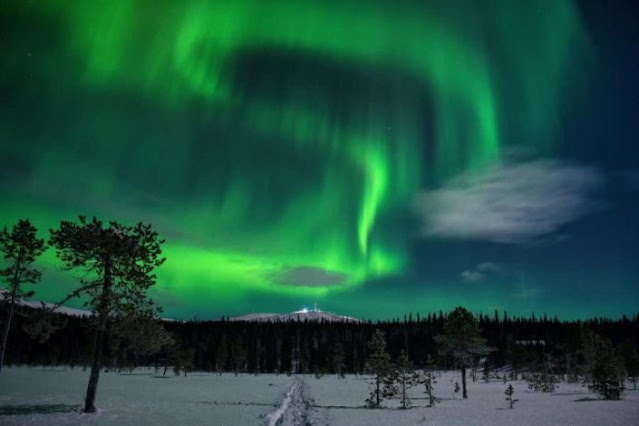The Northern Lights might move farther south into the central area United State in this week
The Northern Lights might be apparent in the central area U.S. this week due to a solid geomagnetic storm, as per the National Oceanic and Atmospheric Administration.
The peculiarity, referred to deductively as the aurora borealis, ordinarily happens nearer toward the North Pole, close to Alaska and Canada.
However, the tempest could push the aurora lights farther south Thursday and Friday, and on the off chance that weather patterns license, should have been visible in districts of Pennsylvania, Iowa and Oregon.
What occurs during a geomagnetic storm?
During the tempest, a coronal opening (the spots that seem dark on the Sun) prompts high breezes, which thus, trigger coronal mass launches, or CMEs. A CME projects plasma and bits of the Sun's attractive field into the climate.
The tempest began Sunday and is supposed to top Thursday to a G3 level — G5 is the most noteworthy estimation of the tempest's power — and end Friday.
While numerous CMEs have been shot out from the Sun, "most are supposed to have next to zero effect at Earth, nonetheless, somewhere around four have potential Earth-coordinated parts," the NOAA said.
What is an aurora?
The Sun's movement is unpredictable, and at times, the aggravations are areas of strength for so can pull the Earth's attractive field away from our planet.
In any case, similar to a rigid elastic band when it's delivered, the attractive field snaps back, and the power of that force makes strong waves known as Alfvén waves around 80,000 miles starting from the earliest stage. As those waves draw nearer to Earth, they move quicker on account of the planet's attractive force.
At times electrons hitch a ride on these superfast Alfvén waves, arriving at speeds as high as 45 million miles each hour as they rush descending.
"Contemplate surfing," said Jim Schroeder, an associate physical science teacher at Wheaton College who has driven research on the cycle. "To surf, you really want to travel up to the right speed for a sea wave to get you and speed up you, and we observed that electrons were surfing. Assuming they were moving with the right speed comparative with the wave, they would get gotten and sped up.
At the point when the electrons arrive at Earth's slight upper climate, they crash into nitrogen and oxygen particles, sending them into an invigorated state. The invigorated electrons at last quiet down and delivery light, which is what we see as the aurora.
Instructions to see the aurora
You needn't bother with any exceptional gear to see auroras.
- Pick where there is minimal light contamination.
- Get to a higher height if conceivable.
- Check the gauge for indications of mists or precipitation, which could hinder your view.
- Filter the skies — while northern is in the name, they can show up from all bearings.
Tags
News

